Is South America dangerous? 11 Tips to stay safe traveling South America!

One question I received a lot recently after returning from my 4-months backpacking trip around the continent was “how safe is South America?” This is an important question, and this guide will show you how to stay safe when backpacking South America!
Unfortunately, South America’s reputation in terms of safety is not the best, and the internet is full of horror stories about violence, robberies and various scams happening all over the continent. Therefore, my parents were not very happy about me traveling around South America for a couple of months. Several of my friends would never even step a foot on the continent because of these horrible stories out there.

Typical police officers in South America
However, is it really that bad? When I set foot on the continent starting in Colombia, I got to know many travelers coming up from the south and finishing their trips in Colombia. Several of them have spent multiple months in South America and faced a negative experience related to getting something stolen, etc. Obviously, this was not the best welcoming to the continent I could ask for and I was afraid something could happen to me during my four months in South America.
Nevertheless, I’m back home again, and absolutely nothing happened! I wasn’t robbed, mugged, scammed or pickpocketed at all. Let me tell you my personal advice about how to stay safe when backpacking South America!
Be careful with Alcohol
I mentioned at the beginning that I was concerned about safety because of the negative stories I was told. Well, after asking for details of why someone got robbed, 90% of the time people’s stories started roughly with “…well, it was 2 am, I was quite drunk on the streets and then it happened…” The bottom line: be careful if you go out partying and if you get wasted. There’s nothing wrong with enjoying South America’s nightlife, but keep in mind that too much alcohol makes you careless and vulnerable, and keep in mind that you’re in a foreign city with people you might know only since a few hours beforehand. Leave your valuables at your hostel or hotel before you go out partying, and make sure that you know how to get (safely) back home. Same goes obviously for drugs – you don’t want to be completely blacked out somewhere in South America!

The local neighborhood “el Alto” in La Paz, Bolivia
Leave your valuables at your hostel/hotel
There’s always a small risk of getting robbed or pickpocketed every time you leave your accommodation. In some places, this risk is lower, in other places, such as Quito, Rio de Janeiro, and Bogota, the risk is higher. Therefore, you should ALWAYS leave valuable things which you don’t need (passport, credit card, big amounts of cash) in your accommodation. Don’t take the risk and carry all your valuables through the streets, especially in the night and when you go partying. Only take some cash and maybe your phone and your camera if you need them.
Do your research
By this, I mean that learning about other’s experiences or doing research online can be very useful to anticipate common crimes and areas you should rather avoid
in the places you plan to visit. It is very useful to learn and read about common scams in a country before you visit, so that you know what might happen to be prepared. Doing that research is not about getting scared or losing your adventure spirit, it is just about being well prepared and understanding the local context.

View from the Comunas on Medellin
Be careful in buses
Always take care of your belongings on public buses. Always keep your daypack with your valuables on your lap, never put your valuables in the luggage storage, in the overhead or even under your seat (people from sitting behind you could grab it). If someone comes to you, claiming to work for the bus company and asking you to put your bag on the overhead for safety reasons, don’t do it, it’s a popular scam in South America (especially in Ecuador). Be especially careful when the bus gets crowded and when many people, including passengers and food sellers; get on and off the bus. Be careful at bus terminals as well. If anyone offers you help and wants to put your daypack somewhere, refuse. I recommend using small locks to lock your bag. Be careful when you fall asleep in buses – I always try to wear sunglasses, making it harder for people to tell if I’m asleep or not. During night buses, put your valuables in your pockets, zip them up and put an extra sweater or jacket on top. I’ve talked to plenty of people who got their stuff stolen in these situations.
Be careful with taxis
This depends on the country and the place you’re in. While in most smaller cities and villages, taxis are fine to use, try to avoid random street taxis especially in the bigger capitals (Quito, Bogota, Lima,). There is a lot of crime happening with fake or stolen taxis. Try to use Uber or Easytaxi whenever you can (I always get a sim card for mobile internet). In Quito, the crimes involving taxis got so bad that the government introduced new rules, making it mandatory for each official taxi to have a specific license plate, a sticker on the car, two cameras inside and a red panic button for passengers. While Uber wasn’t launched yet in Ecuador in summer 2017, the app EasyTaxi was a good alternative that I used.

The centre of Lima, Peru
Some further remarks about taking taxis:
• Take care when exiting a car – leave the door open and ask the driver to help you get your bag out, making him/her exit the car before you leave. This prevents the driver from driving off with your bags in the car as soon as you exit (This isn’t very common, but it happened to people I know).
• Check on google maps or maps.me (works offline) the route that your driver chooses and ask if you feel like the taxi is heading in the wrong direction. Give your driver the feeling that you’re prepared and that you know where to go.
• Ask the driver to turn on the meter. In some countries or cities, metered taxis don’t exist. In this case, make sure to agree on a price before you enter the car and have a good idea of what is a fair price for the route you will take (ask locals at the bus terminal or in your hostel).
• If your driver wants to pick up a random person on the street, refuse, protest and in the worst-case scenario, get out of the car.
One last point to clarify – don’t get the impression that all taxi drivers are bad guys, this is certainly not the case and most drivers I had were very friendly, helpful and gave me recommendations and advice about their city. But as always, it’s good to be prepared.
Get information at your accommodation/hostel
That’s the first thing I do when I check in at a new place – I ask at the reception for a city map and ask for some further information – any areas to avoid? Is it safe to walk? How is it at the night? No one knows the neighborhood better as people working at your hostel, so take their advice.
Further, the situation in Latin America always changes so fast. Nicaragua was super safe to visit in 2017, but should be avoided because of violent protests in 2018. Colombia was one of the most dangerous countries a few years ago, but is completely safe to visit in 2017 and 2018. You see – the situation always changes, so make sure to get updated information.

Bogota, Colombia
Time your arrival
When taking a bus or flight, I try to time my arrival so that I arrive during daylight. Sure, this isn’t always possible. In case you have a late or super early arrival, get some information before – how do you get to your hostel. Do they have a 24-hour reception? (if not, send them an email in advance).
Avoid certain areas (especially at night)

Every major city has areas that need to be avoided, so make sure to know them. It’s a no-brainer that you shouldn’t walk down dark allies, but that’s not everything. Furthermore, there’s also a big difference between daytime and nighttime. Let me give you some examples: While the area of Ipanema is one of the safest neighborhoods in Rio de Janeiro, it’s dangerous to be at the beach during the night. While the historical center in Bogota is the place were all attractions and hostels are located, don’t walk around there in the night either. This might be surprising since these places are safe during the day and you might expect that the top tourist hotspots are always fine to visit, but this isn’t the case
Be careful when using ATMs
When taking out money, try to do it during daylight and if possible in a proper bank or at least in a closed building. Make sure that no one watches, put your money quickly in your pockets and be extra careful while walking back to your hostel.
Know the scams
In every region in the world, there are specific kinds of scams that you need to know in order to avoid them. A quick google research can help. Here are some common ones in South America:
• Suddenly, out of nowhere, there’s some slush / shit / whatever on your clothes, on your bag or on your face. Some locals approach you, offering their help, trying to clean it up. You’re confused, you’re distracted. And suddenly, the locals are gone, and so is your wallet or your phone
• Suddenly, there’s some cash lying on the ground, just next to you! You pick it up, you’re distracted – and your daypack is gone.
• Suddenly, you’re approached in a bus by someone claiming to work for the bus company and pushing you to put your daypack in the overhead, since it wouldn’t be allowed to carry it on your lap. He offers you help, the bus gets crowded, people get on and off. And your bag is gone.
• Suddenly, someone randomly talks o you on a bus, while your bag is on the floor. You talk, you’re distracted, and someone from behind grabs your back and takes out your valuables.
• Suddenly, someone bumps into you on the street, he/she apologizes – and your wallet is gone.
As a rule of thumb: Always be cautious if something unexpected happens, since it’s every scammer’s main goal to distract your attention. Again, don’t be paranoid, most people are kind and helpful, but also don’t be too naïve and careless.

The outskirts of La Paz, Bolivia
Don’t be a hero
This one is very, very important. In case someone threatens you with a gun or a knife, DON’T fight back, DON’T discuss, just hand out your valuables. In Latin America, criminal’s threshold to actually use their weapons is very low and you definitely risk your life if you offer any resistance. Keep in mind: your life is more valuable than any material value. Same goes if you witness any crime or any robbery – don’t try to be the hero, just leave the place as soon as you can.
I hope I was able to give you a broad overview of how to stay safe in South America. It is not my intention to scare you. Many people (including me!) travel South America for several months without anything bad happening to them. Nevertheless, the safety situation certainly is different than in Europe and it’s necessary to be prepared.
But now stop worrying and get ready for your South America adventure! Check out the ultimate South America bucket list for some inspiration for your backpacking trip.
Did you already pack your bag? Have a look at this South America packing checklist from my friend Steph to make sure you don’t leave anything important behind!
The 10 Safest South American Countries to Visit in 2022, Ranked
Travel in South America has so much appeal. It’s an area known for its dramatic natural beauty, rich, millennia-old cultural heritage and warm communities.
However, a concern often nagging in the back of people’s minds when choosing to travel to is whether it’s safe to travel in South America. This continent has attracted quite a worrying reputation over the years, but this is a sweeping and unfair generalization that doesn’t reflect the realities of life and travel in the 13 diverse countries within South America.
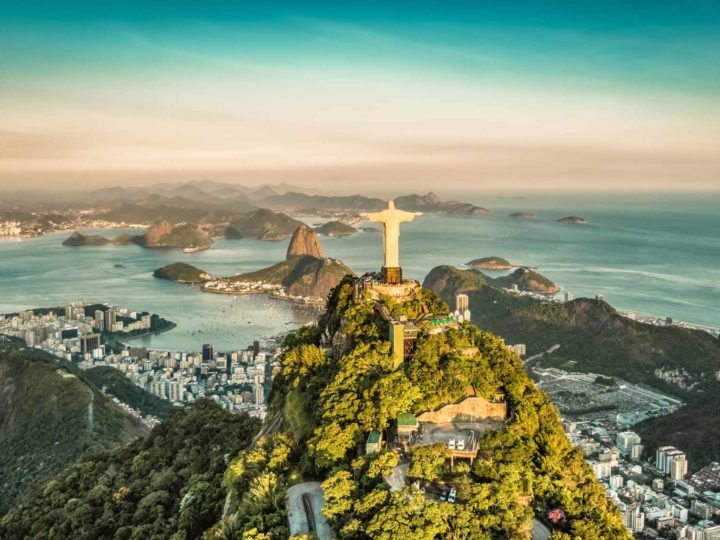
Before planning your trip, it’s worth getting to grips with how safe the country you’re visiting is – as well as common scams and issues you should be aware of before you arrive. So here are the top ten safest countries in South America, according to the 2021 Global Peace Index, as well as links out to the relevant travel advisories and travel warnings for each destination.
Planning Your Trip to South America?
Save time, stress & money with a customized travel itinerary planned for you by a South America expert
What previous clients have said:
Steph’s itinerary exceeded all expectations. She provided off the beaten path hikes, great restaurants and accommodations, and very helpful local contacts.
Due to the weather we had to deviate from our original plan, however Steph quickly responded to our email during the trip with further recommendations. Her service took all the guess work out of planning our vacation and lead to the most fun and unforgettable trip we have ever had!
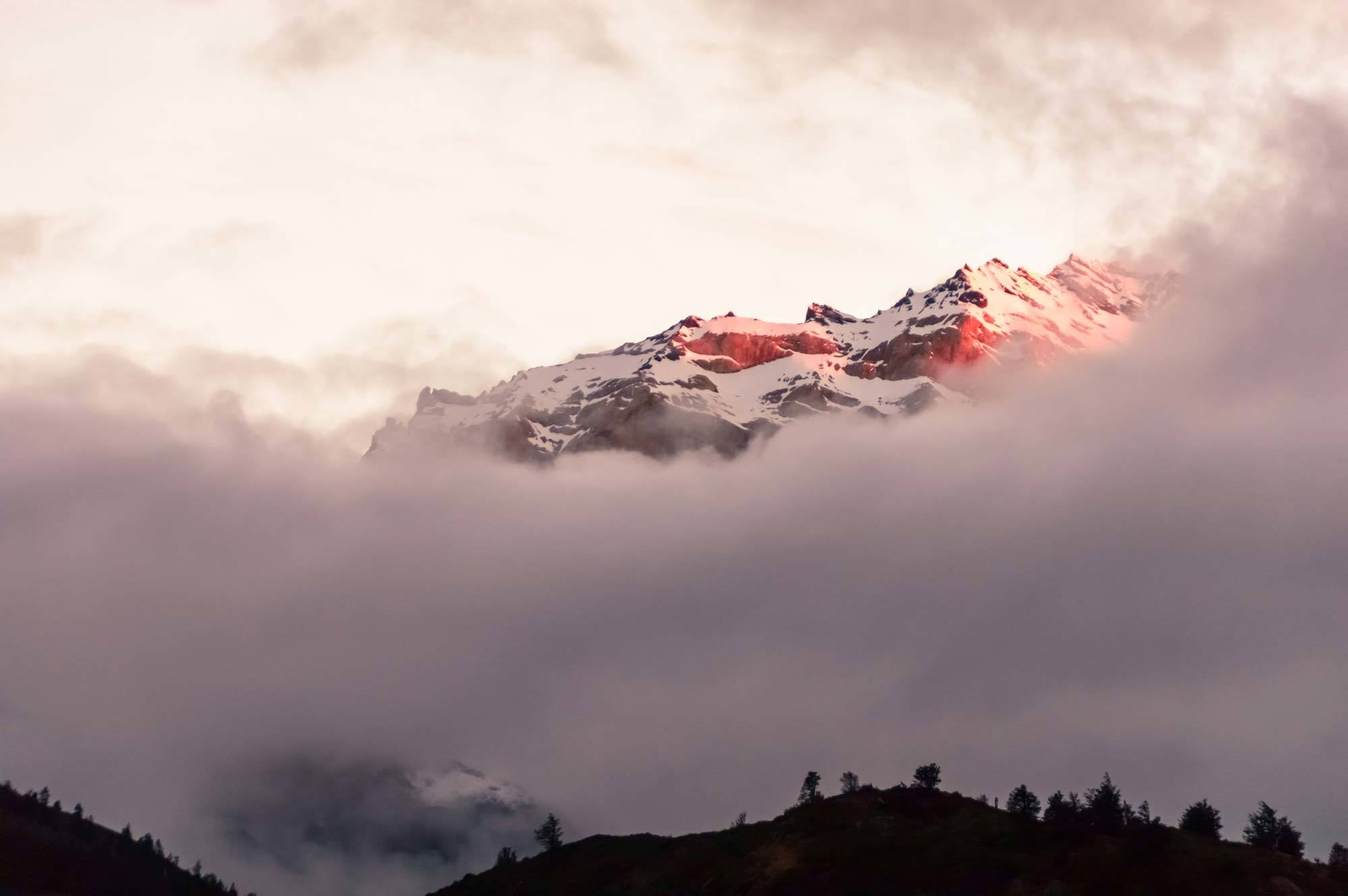
Catherine Bradley
1. Uruguay
- Rank: 47/163
- Government travel advisory:US State Department
Sitting at the top of the pile of safest South American countries is Uruguay. According to the 2021 Global Peace Index, Uruguay ranks 47 th out of the world’s 163 nations. Despite historically being one of the lesser-known South American countries on the tourism trail, this is now changing thanks to a growing awareness of its allure.
Tranquil, safe, and green, Uruguay is fast becoming an ideal getaway for holidaymakers of all demographics.
How to stay safe travelling in Uruguay
When travelling to Uruguay, safety concerns to be aware of are pick pocketing, muggings and car break-ins in the big cities – but care should be taken in the smaller towns and resorts, too. It is advisable to avoid carrying large amounts of cash or expensive jewelry. It is generally best to avoid walking alone at night.
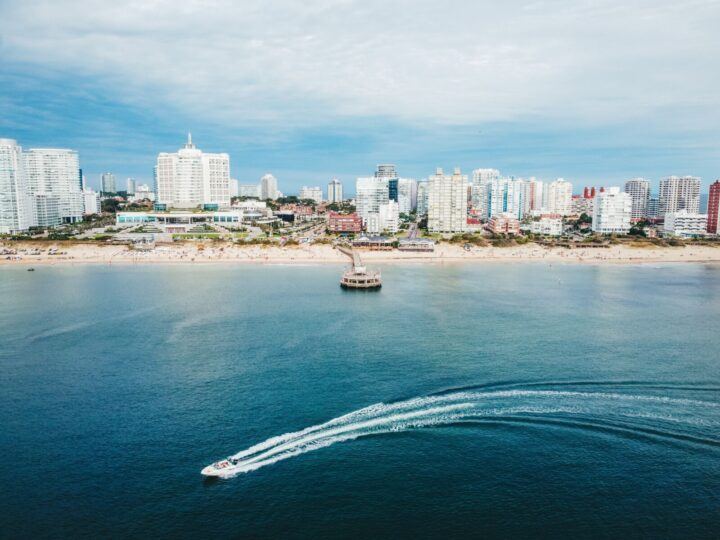
Uruguay is home to incredible beach resorts where you can relax.
Uruguayan destinations you shouldn’t miss
Uruguay has some stunning places to visit, including its capital, Montevideo – a place we consider to be one of the best places to visit in South America. Another one of Uruguay’s most lauded tourist attractions is Colonia del Sacramento, a city and UNESCO World Heritage Site, and home to some of the finest wineries and vineyards in the country.
Another unmissable destination is Punta del Este, an exclusive beach resort that boasts a breath-taking coastline on the Atlantic Ocean. A quieter alternative to Punta del Este is Jose Ignacio – a former fisherman’s village turned idyllic beach getaway. Salto, Uruguay’s second city is also well worth a visit, with its leafy walks, picturesque plazas and laid-back vibes.
2. Chile
- Rank: 49/163
- Government travel advisory:US State Department
Chile ranks just a couple of places below Uruguay in the 2021 Global Peace Index at 49 th and is South America’s second safest country. It is another place that has experienced a travel boom over the past few years – something that should come as no surprise.
Chile’s mesmerizing landscapes range from desert plateaus to glacier speckled mountain rangers, so it’s fair to say this stunning nation has something for everyone.
How to stay safe travelling in Chile
Despite being one of the safest places to visit in South America, travellers should remain vigilant, particularly in Santiago and other large cities. A common issue is with fake, unofficial taxis whose drivers may attempt to steal from tourists – it’s therefore advisable to use pre-booked official taxis, particularly at the airport in Santiago. Asking the driver for proof of reservation can mitigate this risk.
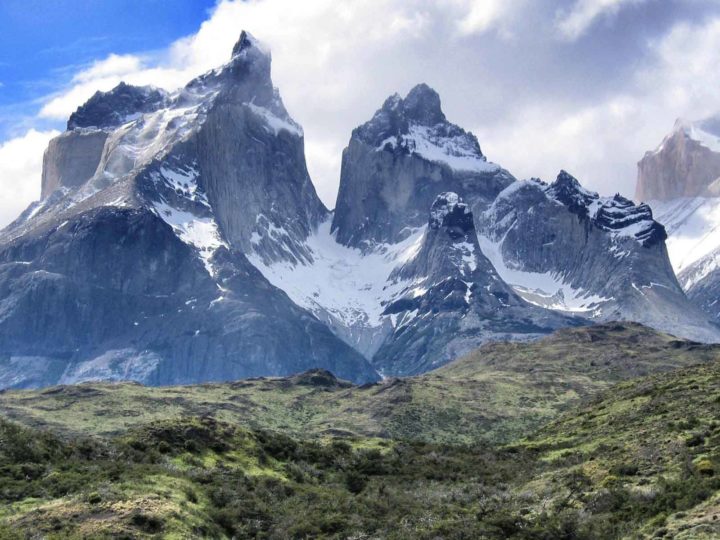
Chile is home to some of the continent’s most outstanding scenery, including Torres del Paine National Park.
Carjacking whilst stopped at traffic lights has occurred in big cities, so it’s prudent to keep car doors locked when driving and parked. Be aware of pickpockets on public transport such as the Metro in Santiago, and avoid carrying large amounts of cash or showy jewelry, and keep your passport in a safe back at your hotel or in a hidden, inaccessible pocket in your bag. If you do get mugged, don’t resist: it’s not worth getting injured over items that you can replace.
Chilean destinations you can explore safely
Most trips to Chile are completely trouble-free, which is why this is a South America destination you can’t miss. If you’re somebody who enjoys the hustle and bustle of the big city, Santiago has tons to offer: from stunning 18 th -century architecture to museums exploring Chile’s ancient history and civilizations.
Torres del Paine National Park is one of our favourite places to visit in Chile due to its incredible hikes and breathtaking views of Patagonia’s wildest landscapes. The Chepu Valley, Chiloé is another must-see to catch a close-up of some unique wildlife. Home to an abundance of spectacular and rare birds, this river valley is a bird-watcher’s dream.
Pucón is a destination that often finds itself on adventure-hunters’ itineraries in Chile because of its incredible hiking trails and volcano ascents, as well as skiing in the winter.
For a change of terrain all together, the Atacama Desert is an otherworldly experience, home to huge volcanoes, salt lakes filled with flamingos and geothermal springs that should not be missed when visiting Chile. Easter Island (or Rapa Nui as it’s known to the local people) is another truly unique Chilean destination that’s home to remarkable stone statues known as moai dotted around the island.
3. Argentina
- Rank: 68/163
- Government travel advisory:US State Department
Argentina is ranked 68 th in the 2021 Global Peace index and is considered the third-safest South American country. One of the most visited countries on the continent, it’s chock-full of rich Latin American culture, an exciting nightlife and food scene along with breathtaking natural beauty to behold.
It doesn’t matter where your passion lies, whether that’s partying, local cuisine or adventure seeking, this nation has so much to offer.
How to stay safe travelling in Argentina
When visiting Argentina, there are some safety considerations to be mindful of. The most common of these is distraction theft. If you are approached on the street and something doesn’t feel quite right, refuse to engage and walk away – otherwise a bystander in on the rouse may well steal your purse or bag while you’re distracted.
Be vigilant to pickpockets, and do not resist should a mugging occur – hand over valuables and money and report the incident to the local police. Always be sure to check out government travel advisories for more information on how to stay safe – there are some neighborhoods for which more caution is advised. However, over 100,000 Britons visit Argentina annually, and most visits are free of trouble!
Destinations in Argentina you can explore safely
Buenos Aires stands out as one of South America’s most enticing capital cities. Latin passion, bohemian neighborhoods and fantastic steakhouses – what’s not to love?
For nature lovers, the famous Perito Moreno Glacier is a must-see. This is one of Patagonia’s most staggering natural ice formations. Visitors are able to get up close to arguably one of the most beautiful natural landmarks on the planet.
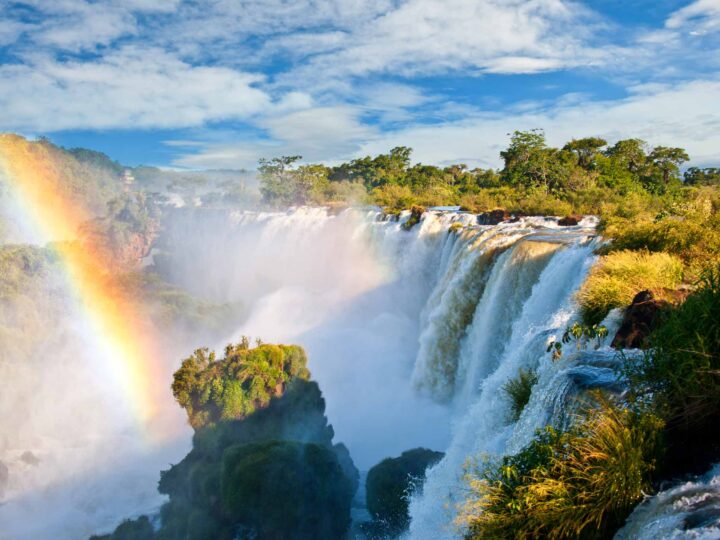
Iguazu Falls are some of the globe’s most incredible waterfalls and a must-visit in Argentina.
Bordering with Brazil, the Iguazú Falls are the largest, most breathtaking waterfalls on the planet and a UNESCO World Heritage Site. Argentina’s second city, Córdoba, also possesses exquisite 16 th century architecture and a large student population, making it an exciting destination for nightlife and culture.
The landscapes of Patagonia’s Ushuaia, the world’s most southerly city, are also spectacular and you can explore the Beagle Channel by boat to visit nearby penguin and seal colonies.
4. Paraguay
- Rank: 75/163
- Government travel advisory:US State Department
Of the safest South American countries, Paraguay comes in at fourth on the continent and 75 th globally for 2021. Off the beaten tourist trail and bordered by Brazil, Bolivia and Argentina, Paraguay is a place unknown to most travellers, but the intrepid ones who do visit are in for a treat.
Full of geological wonders, an under-the-radar Latin American capital city and well-preserved Jesuit buildings, Paraguay is an underrated gem that will dazzle and surprise.
Paraguay travel warnings
Safety precautions to take in Paraguay include making sure mobile phones and money are out of sight – muggings and street crime can occur if you’re flashing valuable items, particularly in Asuncion and Ciudad del Este on the Brazilian border. It is also sensible to avoid walking alone at night in these cities. Travellers often prefer to take taxis for convenience and safety as opposed to other modes of public transport.
Destinations in Paraguay to visit safely
There are some amazing adventures to be had in Paraguay. Asunción, its capital, is a warm, welcoming city boasting 17 th -century architecture, epic art galleries and some fantastic restaurants.
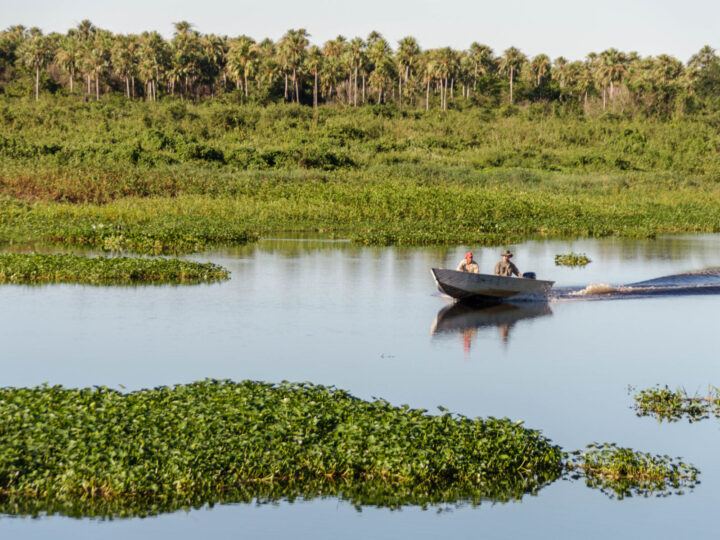
A trip into the Paraguyan Pantanal is a true adventure in South America’s fourth safest country.
On the border with Brazil and a stone’s throw from Iguazu Falls is the Itaipú Dam: a gigantic structure that generates most of Paraguay’s electricity and is one of the engineering wonders of the world. You can visit it as part of a day tour from Ciudad del Este.
For wildlife lovers, go on a guided tour of the Gran Chaco; a dry forest home to tropical birds, pumas and armadillos. You can also take an intrepid adventure deep into the Pantanal for sightings of monkeys, caiman and jaguar.
La Santisima Trinidad de Paraná tells an important story about Paraguayan history, and more specifically, the Jesuit Missions and how indigenous communities were impacted. This UNESCO World Heritage Site is full of fascinating ancient ruins from the colonial era and is one of the country’s most visited places.
5. Peru
- Rank: 86/163
- Government travel advisory:US State Department
Peru ranks as the continent’s fifth safest country and sits at number 86 on the 2021 Global Peace Index. It is one of the most popular destinations for people travelling through South America, and, between its breathtaking natural wonders, ancient ruins and delicious cuisine, it’s easy to see why adventurers flock to this uniquely beautiful nation en masse.
How to travel in Peru safely
Things to be mindful of when it comes to safety are muggings in major cities and passport theft – it is best to avoid carrying your passport around. There have also been a few rare incidents where tourists have been robbed at gunpoint outside luxury hotels and lodges. In this situation, do not resist and report the incident to police. Be on the lookout for bogus taxis and only book official ones.
A few cases of sexual assault involving lone female travellers have also been reported in Cusco and Arequipa – so never leave drinks unattended and avoid using unofficial tour agents.
However, remember that the serious incidents above are rare, but being aware of them is key to a safe trip.
Destinations in Peru to visit safely
There is an abundance of culture and beauty to explore in Peru. The utterly majestic Inca City of Machu Picchu is one of the Seven Wonders of the World and the most famed Peruvian destinations.
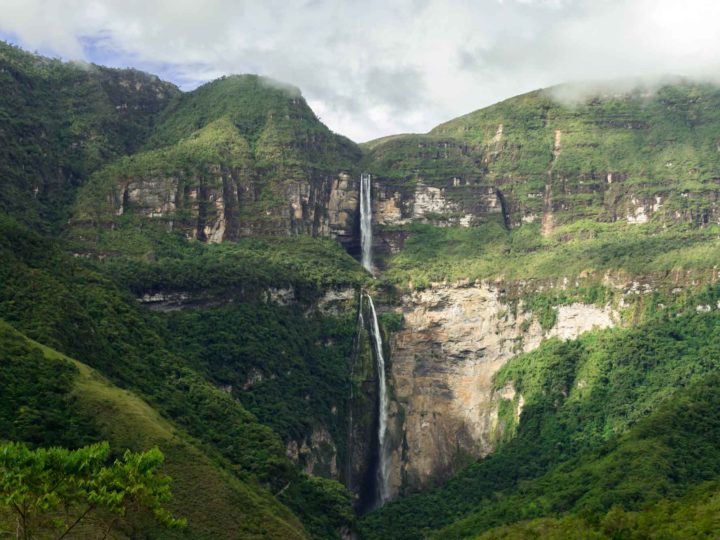
Gocta Falls, one of the highest waterfalls in the world, is a destination in Peru visited by few foreign tourists.
Iquitos is another incredible place to visit in Peru; this spectacular Amazonian city is reachable by boat or plane and is one of the main gateways into the jungle.
The White City, Arequipa, is full of charm and arguably Peru’s most beautiful thanks to its striking architecture. It’s also a great stopping-off point on a trip to the Colca Canyon.
The north of Peru boasts one of the world’s highest waterfalls in the Gocta and Yumbilla Falls – the views are jaw dropping and the surrounding jungle landscapes packed full of flora and fauna.
With snow-capped mountains and turquoise waters, Huaraz is also a hiker and climber’s paradise, particularly for those looking to bag their first 5,000+ mountain ascent.
6. Ecuador
- Rank: 88/163
- Government travel advisory:US State Department
The 2021 Global Peace Index ranks Ecuador as the sixth safest country in South America, coming in at 88 th worldwide. Travellers adore this small but wonderfully scenic country. Beaches, cities, jungles and, across the ocean in the Galapagos Islands, underwater worlds full of amazing wildlife – you name it, Ecuador has it!
How to visit Ecuador safely
There are some safety precautions you should take when travelling through Ecuador. Pickpocketing and muggings are common, so all of the same advice above for previous countries applies.
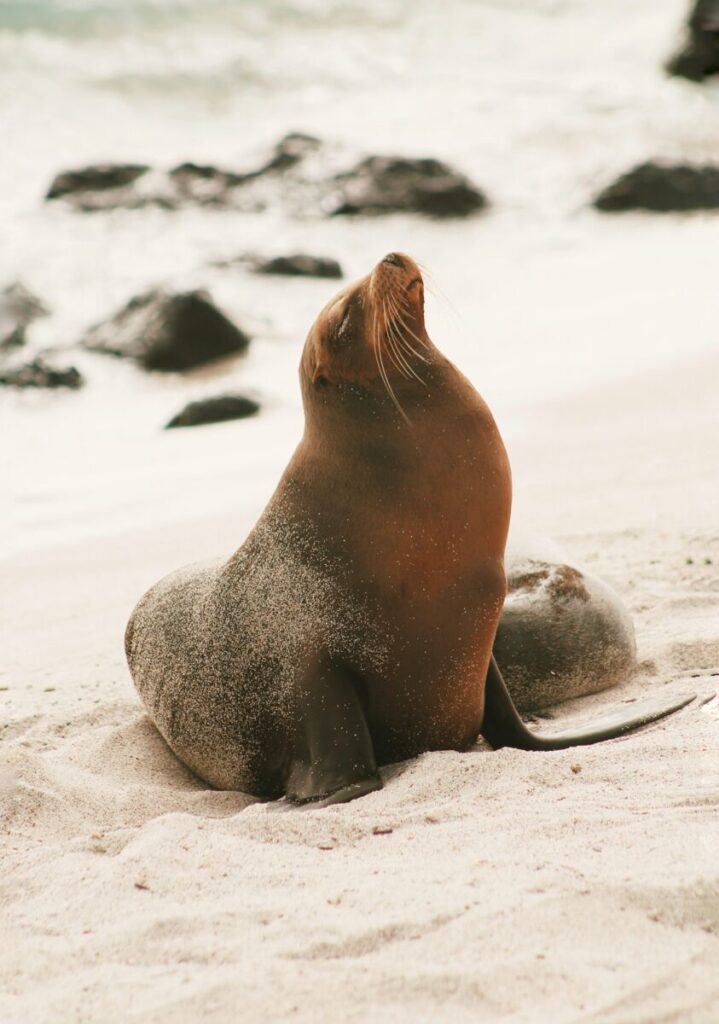
The Galapagos Islands is one of the most diverse places on the planet – and a destination you can visit safely in South America.
Female travellers in particular should take care to book accommodation that has been well reviewed by other travellers and be aware of date rape drugs – serious sexual assaults have taken place. Never accept cigarettes, perfume samples, food or drink from a stranger, as these can contain drugs used to subdue you while you’re robbed.
Destinations to explore in Ecuador
Ecuador is abundantly blessed with experiences that are likely to be once-in-a-lifetime for visitors. The Galapagos Islands are unlike anywhere else on the planet thanks to endemic wildlife that cannot be found anywhere else on the planet.
Taking a boat tour of the Ecuadorian Amazon is also highly recommended because you can spot anacondas, piranhas and pink dolphins!
Quito and Cuenca are also the perfect city trips for visitors to South America. Both places have well-preserved historic architecture and plenty of places for sampling delicious Ecuadorian food.
The Cascada el Pailón is a magnificent giant waterfall that emits swirling mists and rainbows – take a suspension bridge over this awe-inspiring natural wonder for some epic views! Located on the edge of the Cloud Forest and along the Rio Verde River, this thunderous natural wonder is one of Ecuador’s largest single-drop waterfalls.
7. Guyana
- Rank: 100/163
- Government travel advisory:US State Department
Guyana sits at 100 th in the Global Peace Index as of 2021 and is South America’s seventh safest country. This spectacular gem often falls off the radar for many travellers, even though it’s South America’s only English-speaking country, which makes it easier to navigate for those who don’t speak Spanish.
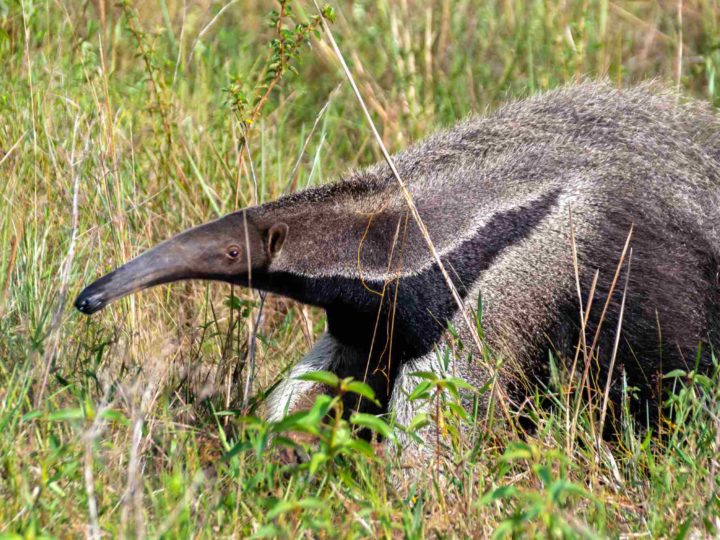
The Rupununi in Guyana is home to giant anteaters, jaguar and giant otters.
Home to a huge tract of untouched and highly biodiverse jungle and small-scale tourism outfits that enable you to meet and learn from the local people, Guyana is a life-changing destination for adventurous travellers.
Travel warnings for visiting Guyana
Safety concerns in Guyana mainly center on the targeting of tourists who are perceived as wealthy. Avoid wearing jewelry or expensive clothes; don’t carry more cash than you need, and always follow government travel advice for specific areas that are best avoided by foreign travellers.
Destinations not to miss in Guyana
Guyana is 80% rainforest, most of which is practically inaccessible and thus a haven for wildlife and dramatic natural attractions. Kaieteur Falls is one of them: the highest waterfalls in the country, it’s a dazzling display of nature’s might. The surrounding national park is also home to key wildlife species such as the dazzlingly orange Guianan cock-of-the-rock.
A trip around Guyana wouldn’t be complete without visiting the Rupununi, a savanna plain in the south-west of Guyana where you can encounter some of the country’s most thrilling wildlife, such as giant anteater, jaguar and giant otter.
Guyana also lays claim to producing the best rum in the world – you can test this out for yourself at Demerara Distillers in Georgetown.
For a truly authentic experience, visit Surama, an indigenous community turned eco-lodge where the community will teach you traditional dances and about cassava production.
8. Bolivia
- Rank: 105/163
- Government travel advisory:US State Department
Bolivia is ranked 105 th in the 2021 Global Peace Index and eighth on its continent for safety. With so many diverse and stunning landscapes, Bolivia may pose some challenges for travellers, but a visit here is guaranteed to be memorable. Between lively cities, salt flats and volcanic landscapes and fascinating indigenous culture, Bolivia is an adventurer’s dream.
How to travel in Bolivia safely
Before you travel to Bolivia, it’s worth considering safety, as tourists can be a target for opportunistic thieves. There are specific factors to take into consideration – some of which require a little extra planning ahead – but all are surmountable.
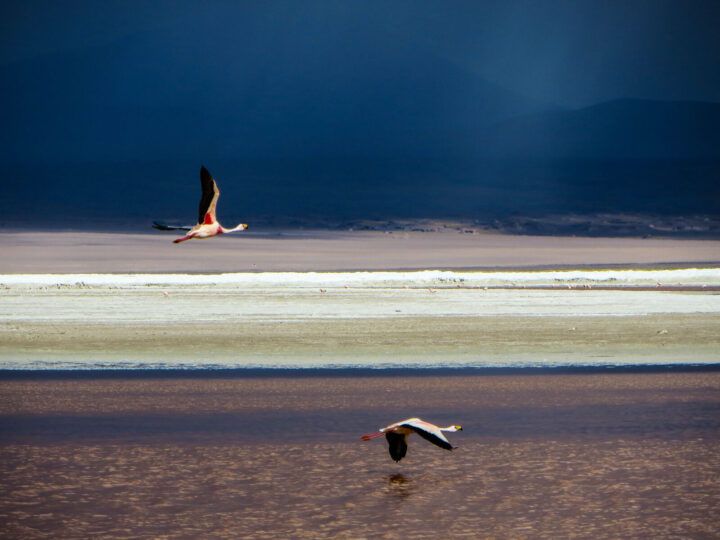
Flamingos fly over Laguna Colorada, a spectacular lake visited as part of a tour of the Salar de Uyuni salt flats.
Be sure to use official taxis only; wear a cross-body bag on your front as opposed to a backpack to keep valuables close, learn some basic Spanish phrases and download your route on apps such as Google maps in the event that you lose internet connection while exploring.
Destinations you can’t miss in Bolivia
Now, for the fun part! The Salar de Uyuni is the largest salt flat in the world and one of Bolivia’s main tourist attractions. Visit during the wet season for incredible reflection shots or during the dry season for mind-blowing perspective shots. Whenever you go, your tour will encompass the region’s most thrilling natural landscapes, including Laguna Colorada, a vast lake home to rare flamingo species.
For the history buffs, we highly recommend the UNESCO Jesuit Missions. These historic sites contain the missions (churches) that were set up by European colonisers in the 17 th century with the aim of converting native peoples to Christianity and offer an intriguing mix of both native and European architectural influences.
The gateway to the Amazon jungle in Bolivia, Rurrenabaque is another destination you shouldn’t miss on a trip to Bolivia, where you can wander through the rainforest in search of jaguars, monkeys and other remarkable wildlife.
Like to travel via your stomach? Cochabamba is known as Bolivia’s foodie capital and is a must if you’re looking to get a taste of authentic local cuisine.
9. Brazil
- Rank: 128/163
- Government travel advisory:US State Department
The home of samba and soccer comes in at 128 th on the Global Peace Index, ranking as the ninth safest country in South America in 2021. For all of its documented problems, Brazil has a rich culture, locals who love to party and some of the world’s most superlative natural and man-made wonders.
How to stay safe on a trip to Brazil
To remain safe while travelling through this enormous country, be aware of muggers, some of whom may be armed. Never try to resist if you’re being mugged. Avoid city beaches after dark and keep possessions close to you whilst on the beach during the day. It is generally recommended to avoid the favelas in any city.
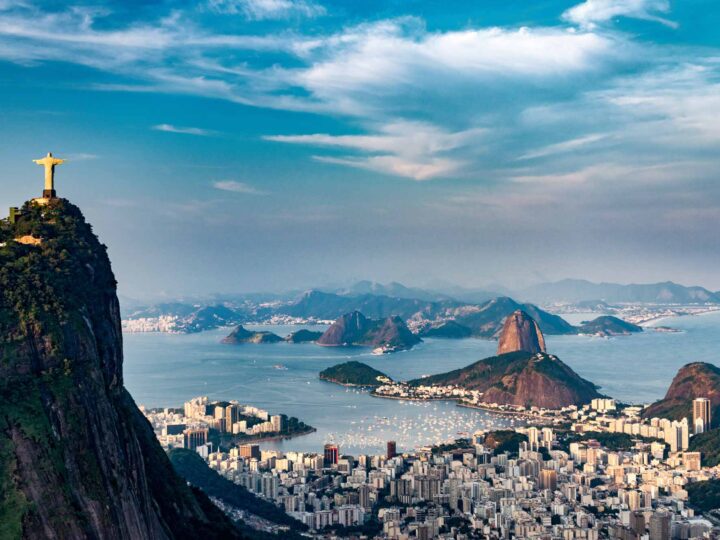
Rio de Janeiro’s Christ the Redeemer statue is one of South America’s most iconic man-made landmarks.
The metro system is generally safer for transport, as taxis can take you through favelas and certain areas where cars containing obvious tourists could be targeted.
Where to visit in Brazil
Rio de Janeiro is the most visited city in South America and for good reason: its impressive beaches, mountains, world-famous Carnival festival and vivacious atmosphere are magnetic. Not to mention the fact that it’s home to Christ the Redeemer statue!
The beautiful Chapada Diamantina National Park in eastern Brazil was created to preserve its diverse ecosystems. With an array of mountain ranges, valleys, waterfalls and flora and fauna on show, this is one for the outdoor enthusiasts.
Likewise, the gorgeous Bonito is a hub of sustainable ecotourism; with dramatic jagged caves, tropical flora and fauna, and turquoise waters to snorkel in.
The city of Sao Paulo is another destination you can’t miss. This sprawling metropolis is a gastronomic paradise, with food markets galore, football stadiums and an array of beautiful green spaces and parks. The state it belongs to is fast becoming a trendy escape for city-dwellers and tourists. There are tons of activities to get involved in – from jeep tours through its jungles, to river rafting and beach visits along its sublime coastlines.
10. Colombia
- Rank: 144/163
- Government travel advisory:US State Department
Of the safest South American countries, Colombia is placed tenth on the continent and 144 th on the 2021 Global Peace Index. A nation that was once off-limits for tourists, Colombia is rapidly becoming one of South America’s most appealing countries, particularly to backpackers and adventure seekers.
With its incredibly diverse terrain, buena onda (good vibes) and untouched archaeological sites, Colombia is guaranteed to leave a mark.
How to travel to Colombia safely
The crime rate is still high in Colombia, so make sure you follow government travel advice to minimize the risk of encountering problems. When you’re travelling, keep all valuables out of sight. Always use official taxis, and be mindful of Colombia’s political climate, which can sometimes lead to demonstrations and protests breaking out quickly and unexpectedly, particularly in cities such as Bogota, Medellin and Cali.
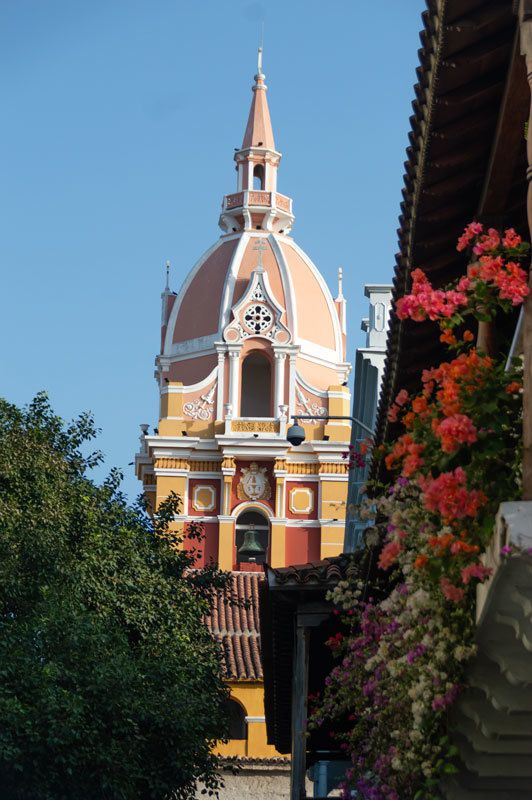
Colombia is home to stunning colonial buildings constructed using slave labour under the Spanish conquest. Tours of Cartagena, the country’s most spectacular city, can help you learn more.
Destinations you can’t miss in Colombia
Adventurers are truly spoilt for choice in Colombia. Its glorious Caribbean coastline boasts Cartagena, a colonial city that looks beautiful but has a dark history.
Los Nevados National Park is another destination not to miss. It boasts an active volcano, jaw-dropping scenery, natural hot springs and a thriving coffee region with farm tours available.
To get a true feel of the beautiful diversity of Colombian culture, head to its vibrant capital, Bogotá. Amongst its many super cool neighborhoods, chic restaurants, art galleries and outstanding street art culture, this city never fails to impress.
Medellín is another remarkable city with tons to see and do. Its museums document its triumph over the drugs wars of the 80s and 90s and its streets are brimming with art, tasty food and cable cars with fantastic views. For more inspiration, read our guide to the best destinations to visit in Colombia.
Can I travel to South America right now?
COVID-19 in South America remains a barrier to travel at present. Many countries still remain on governmental do-not travel lists, while others, such as Chile and Argentina, have only just opened up their borders to international travellers, with travel restrictions in place for many destinations across South America.
Because of ongoing restrictions, you may struggle to get travel insurance if you attempt to visit a country that your government does not currently deem safe. Keep checking your government’s travel advisory to stay updated and be aware that you will likely need a negative COVID-19 test and proof of vaccination to be permitted entry into most countries in South America.
Source https://germanbackpacker.com/stay-safe-backpacking-south-america/
Source https://worldlyadventurer.com/is-it-safe-to-travel-south-america/
Source